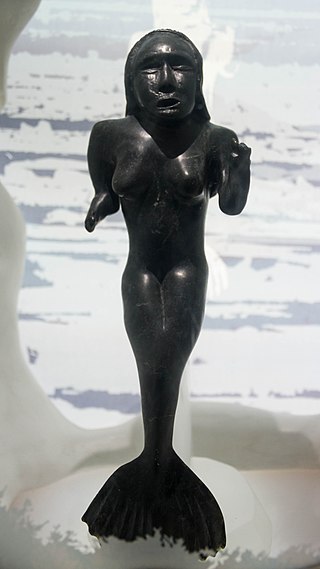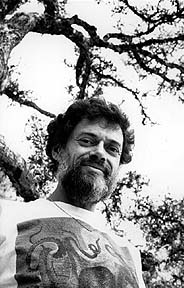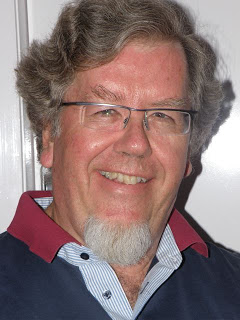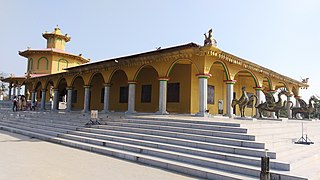Animism is the belief that objects, places, and creatures all possess a distinct spiritual essence. Animism perceives all things—animals, plants, rocks, rivers, weather systems, human handiwork, and in some cases words—as being animated, having agency and free will. Animism is used in anthropology of religion as a term for the belief system of many Indigenous peoples in contrast to the relatively more recent development of organized religions. Animism is a metaphysical belief which focuses on the supernatural universe : specifically, on the concept of the immaterial soul.

Shamanism or samanism is a religious practice that involves a practitioner interacting with the spirit world through altered states of consciousness, such as trance. The goal of this is usually to direct spirits or spiritual energies into the physical world for the purpose of healing, divination, or to aid human beings in some other way.
Spirit possession is an unusual or an altered state of consciousness and associated behaviors which are purportedly caused by the control of a human body and its functions by spirits, ghosts, demons, angels, or gods. The concept of spirit possession exists in many cultures and religions, including Buddhism, Christianity, Haitian Vodou, Dominican 21 Divisions, Hinduism, Islam, Wicca, and Southeast Asian, African, and Native American traditions. Depending on the cultural context in which it is found, possession may be considered voluntary or involuntary and may be considered to have beneficial or detrimental effects on the host. Spirit possession is often regarded as a reason in support of spirits, deities or demons. In a 1969 study funded by the National Institute of Mental Health, spirit possession beliefs were found to exist in 74% of a sample of 488 societies in all parts of the world, with the highest numbers of believing societies in Pacific cultures and the lowest incidence among Native Americans of both North and South America. As Pentecostal and Charismatic Christian churches move into both African and Oceanic areas, a merger of belief can take place, with demons becoming representative of the "old" indigenous religions, which the Christian ministers attempt to exorcise.

Magic is an ancient practice rooted in rituals, spiritual divinations, and/or cultural lineage—with an intention to invoke, manipulate, or otherwise manifest supernatural forces, beings, or entities in the natural world. It is a categorical yet often ambiguous term which has been used to refer to a wide variety of beliefs and practices, frequently considered separate from both religion and science.

Inuit religion is the shared spiritual beliefs and practices of the Inuit, an indigenous people from Alaska, northern Canada, parts of Siberia and Greenland. Their religion shares many similarities with some Alaska Native religions. Traditional Inuit religious practices include animism and shamanism, in which spiritual healers mediate with spirits. Today many Inuit follow Christianity ; however, traditional Inuit spirituality continues as part of a living, oral tradition and part of contemporary Inuit society. Inuit who balance indigenous and Christian theology practice religious syncretism.
Belief in magic exists in all societies, regardless of whether they have organized religious hierarchy including formal clergy or more informal systems. While such concepts appear more frequently in cultures based in polytheism, animism, or shamanism. Religion and magic became conceptually separated in the West where the distinction arose between supernatural events sanctioned by approved religious doctrine versus magic rooted in other religious sources. With the rise of Christianity this became characterised with the contrast between divine miracles versus folk religion, superstition, or occult speculation.
Chaos magic, also spelled chaos magick, is a modern tradition of magic. Emerging in England in the 1970s as part of the wider neo-pagan and esotericist subculture, it drew heavily from the occult beliefs of artist Austin Osman Spare, expressed several decades earlier. It has been characterised as an invented religion, with some commentators drawing similarities between the movement and Discordianism. Magical organizations within this tradition include the Illuminates of Thanateros and Thee Temple ov Psychick Youth.

Terence Kemp McKenna was an American ethnobotanist and mystic who advocated the responsible use of naturally occurring psychedelic plants. He spoke and wrote about a variety of subjects, including psychedelic drugs, plant-based entheogens, shamanism, metaphysics, alchemy, language, philosophy, culture, technology, ethnomycology, environmentalism, and the theoretical origins of human consciousness. He was called the "Timothy Leary of the '90s", "one of the leading authorities on the ontological foundations of shamanism", and the "intellectual voice of rave culture".

Asian witchcraft encompasses various types of witchcraft practices across Asia. In ancient times, magic played a significant role in societies such as ancient Egypt and Babylonia, as evidenced by historical records. In the Middle East, references to magic can be found in the Torah and the Quran, where witchcraft is condemned due to its association with belief in magic, as it is within other Abrahamic religions.
A covenstead is a meeting place of a coven. The term relates specifically to the meeting place of witches within certain modern religious movements such as Wicca that fall under the collective term Modern Paganism, also referred to as Contemporary Paganism or Neopaganism. It functions to provide a place for the group to conduct rituals, undertake lessons and recognise festivals. It can also be referred to as the home of the coven.

Indigenous Philippine folk religions are the distinct native religions of various ethnic groups in the Philippines, where most follow belief systems in line with animism. Generally, these Indigenous folk religions are referred to as Anito or Anitism or the more modern and less ethnocentric Dayawism, where a set of local worship traditions are devoted to the anito or diwata, terms which translate to gods, spirits, and ancestors. 0.23% of the population of the Philippines are affiliated with the Indigenous Philippine folk religions according to the 2020 national census, an increase from the previous 0.19% from the 2010 census.

The beliefs and practices of African people are highly diverse, including various ethnic religions. Generally, these traditions are oral rather than scriptural and are passed down from one generation to another through folk tales, songs, and festivals, and include beliefs in spirits and higher and lower gods, sometimes including a supreme being, as well as the veneration of the dead, and use of magic and traditional African medicine. Most religions can be described as animistic with various polytheistic and pantheistic aspects. The role of humanity is generally seen as one of harmonizing nature with the supernatural.

Nevill Drury was an English-born Australian editor and publisher, as well as the author of over 40 books on subjects ranging from shamanism and western magical traditions to art, music, and anthropology. His books have been published in 26 countries and in 19 languages.
Spiritualism is a metaphysical belief that the world is made up of at least two fundamental substances, matter and spirit. This very broad metaphysical distinction is further developed into many and various forms by the inclusion of details about what spiritual entities exist such as a soul, the afterlife, spirits of the dead, deities and mediums; as well as details about the nature of the relationship between spirit and matter. It may also refer to the philosophy, doctrine, or religion pertaining to a spiritual aspect of existence.

The Tai folk religion, Satsana Phi or Ban Phi is the ancient native ethnic religion of Tai people still practiced by various Tai groups. Tai folk religion was dominant among Tai people in Asia until the arrival of Buddhism and Hinduism. It's primarily based on worshipping deities called Phi, Khwan and Ancestors.

In Old Norse, seiðr was a type of magic which was practised in Norse society during the Late Scandinavian Iron Age. The practice of seiðr is believed to be a form of magic which is related to both the telling and the shaping of the future. Connected to the Old Norse religion, its origins are largely unknown, and its practice gradually declined after the Christianization of Scandinavia. Accounts of seiðr later made it into sagas and other literary sources, while further evidence of it has been unearthed by archaeologists. Various scholars have debated the nature of seiðr, some of them have argued that it was shamanic in context, involving visionary journeys by its practitioners.

The Ryukyuan religion (琉球信仰), Ryūkyū Shintō (琉球神道), Nirai Kanai Shinkō (ニライカナイ信仰), or Utaki Shinkō (御嶽信仰) is the indigenous belief system of the Ryukyu Islands.

Mongolian shamanism, more broadly called the Mongolian folk religion, or occasionally Tengerism, refers to the animistic and shamanic ethnic religion that has been practiced in Mongolia and its surrounding areas at least since the age of recorded history. In the earliest known stages it was intricately tied to all other aspects of social life and to the tribal organization of Mongolian society. Along the way, it has become influenced by and mingled with Buddhism. During the socialist years of the twentieth century, it was heavily repressed, but has since made a comeback.

Kev Dab Kev Qhuas is the common ethnic religion of the Miao people, best translated as the "practice of spirituality". The religion is also called Hmongism by a Hmong American church established in 2012 to organize it among Hmong people in the United States.
Shamanism is a religious practice present in various cultures and religions around the world. Shamanism takes on many different forms, which vary greatly by region and culture and are shaped by the distinct histories of its practitioners.













